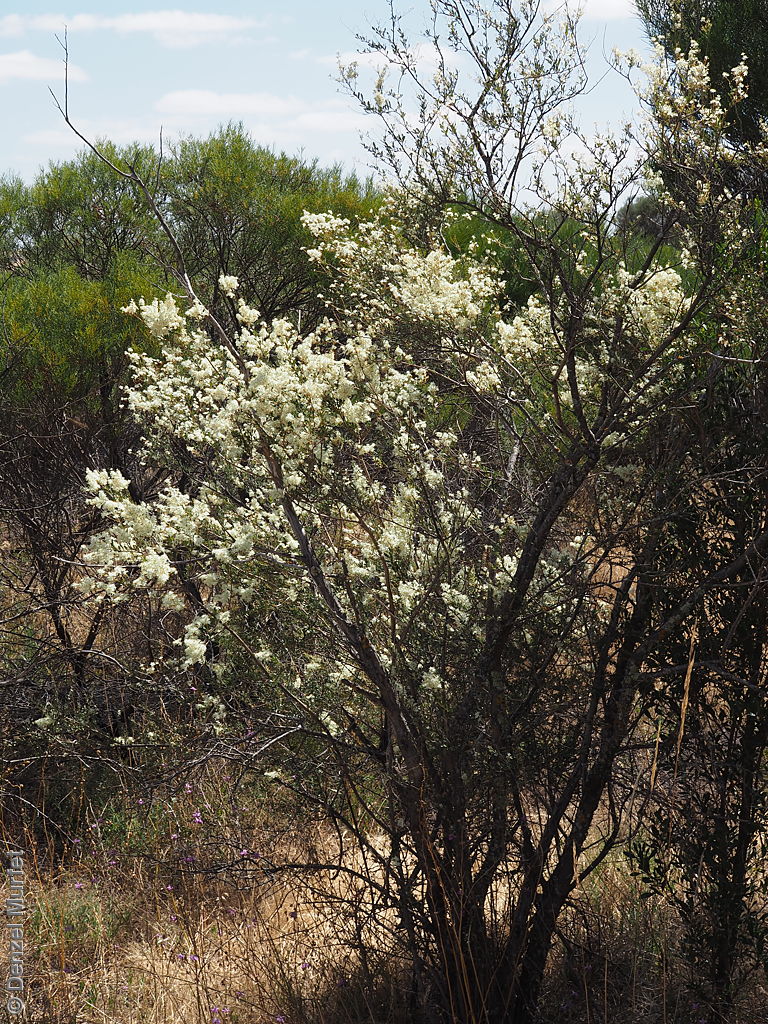
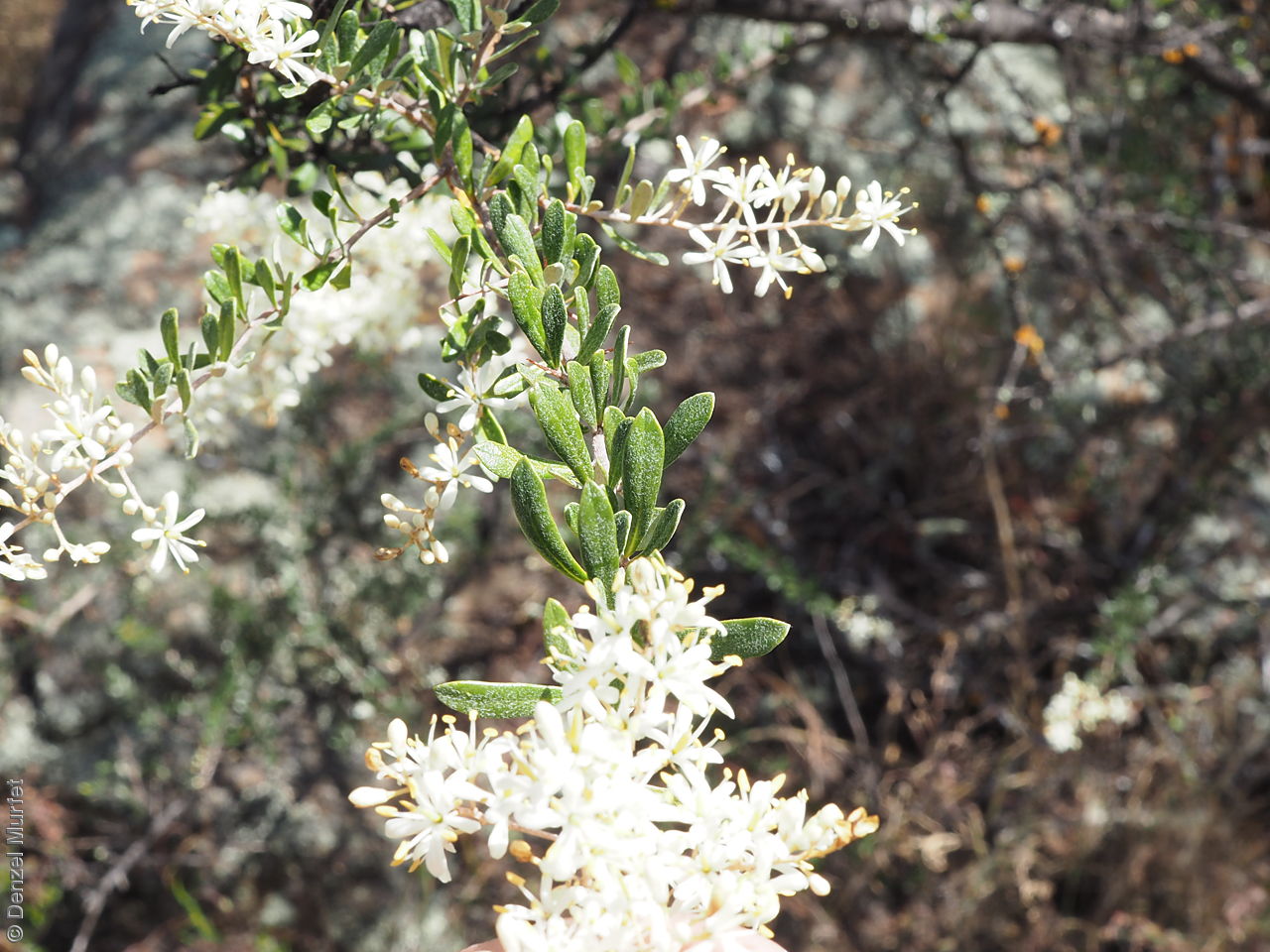
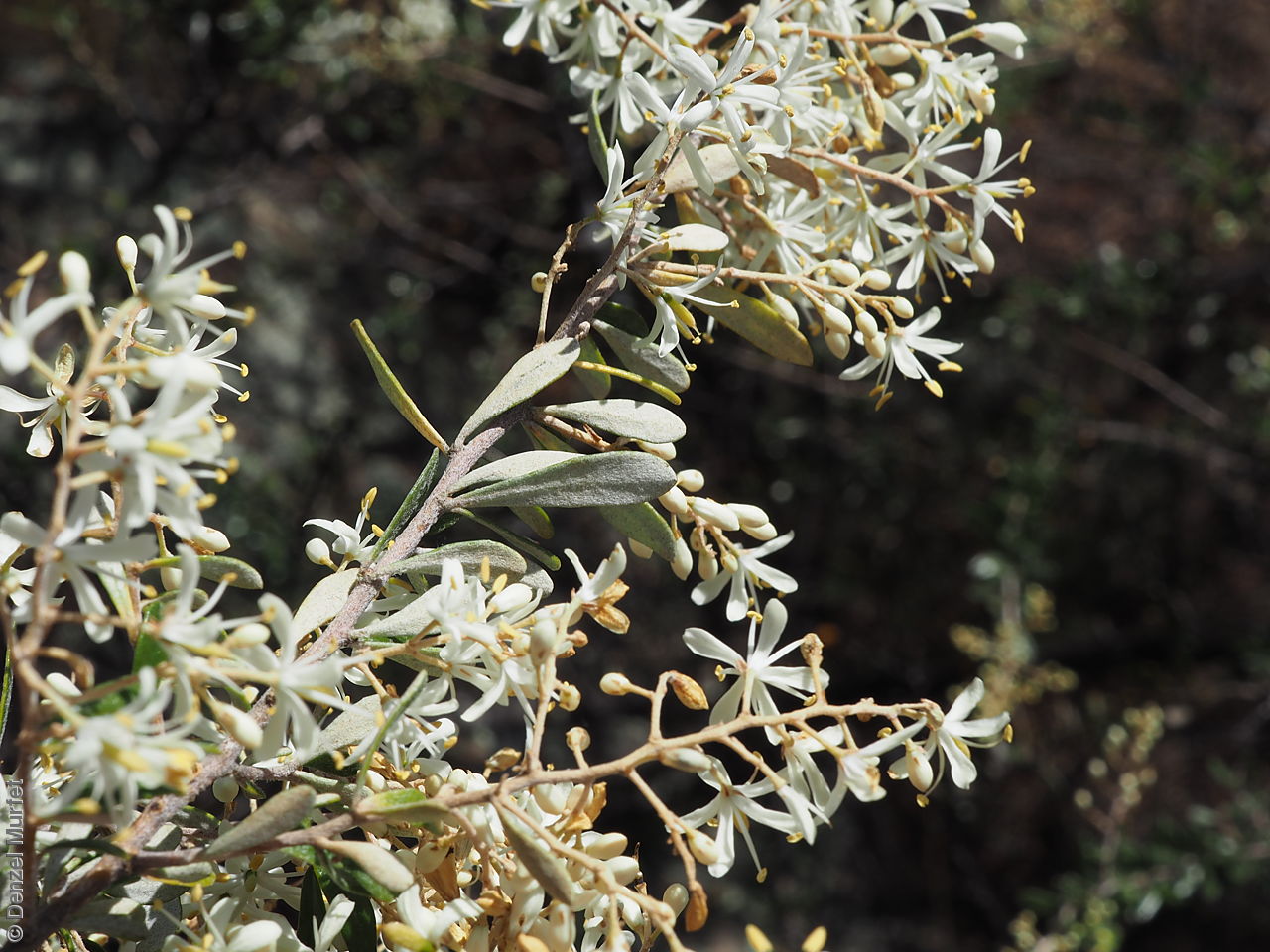


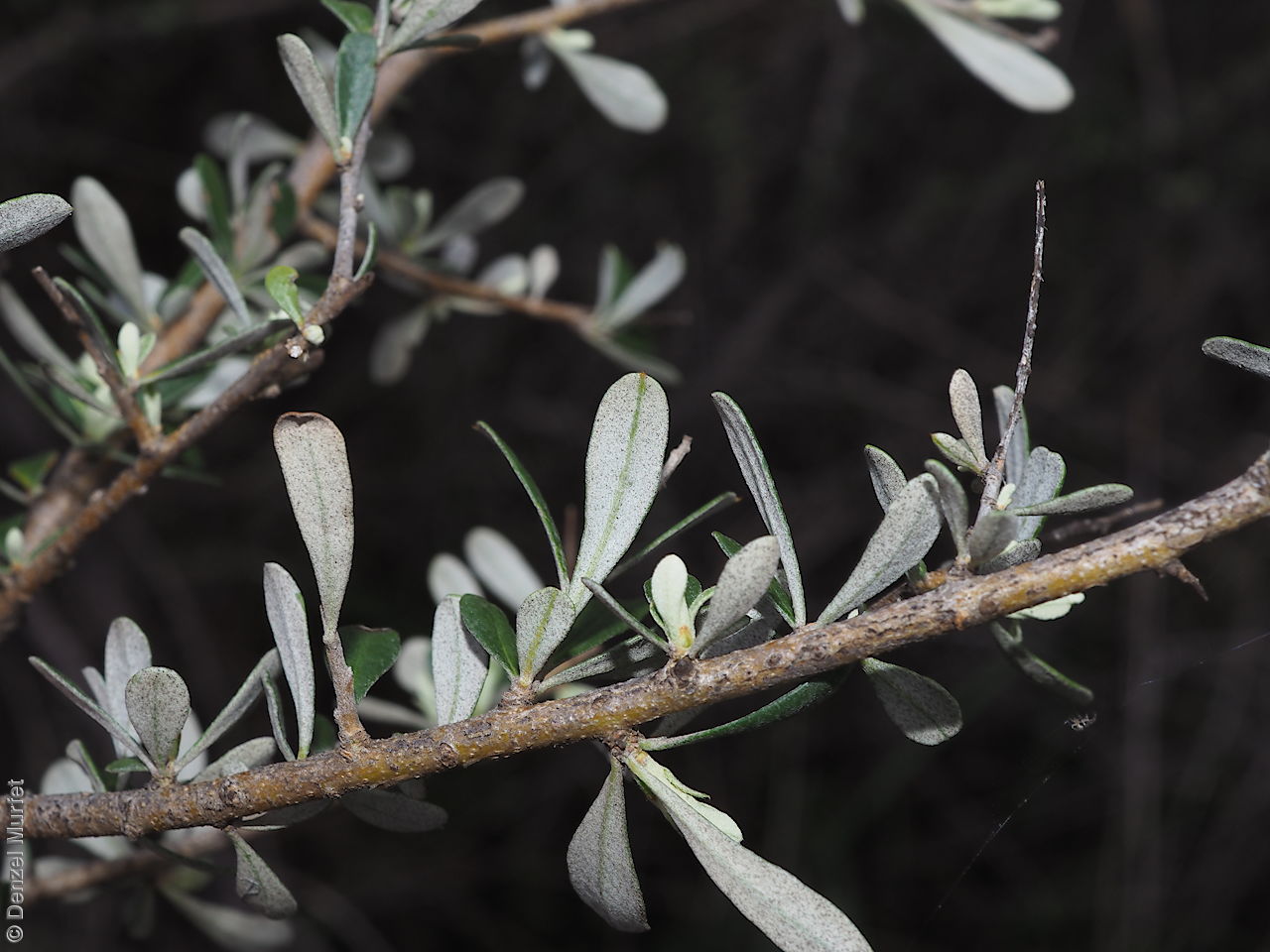

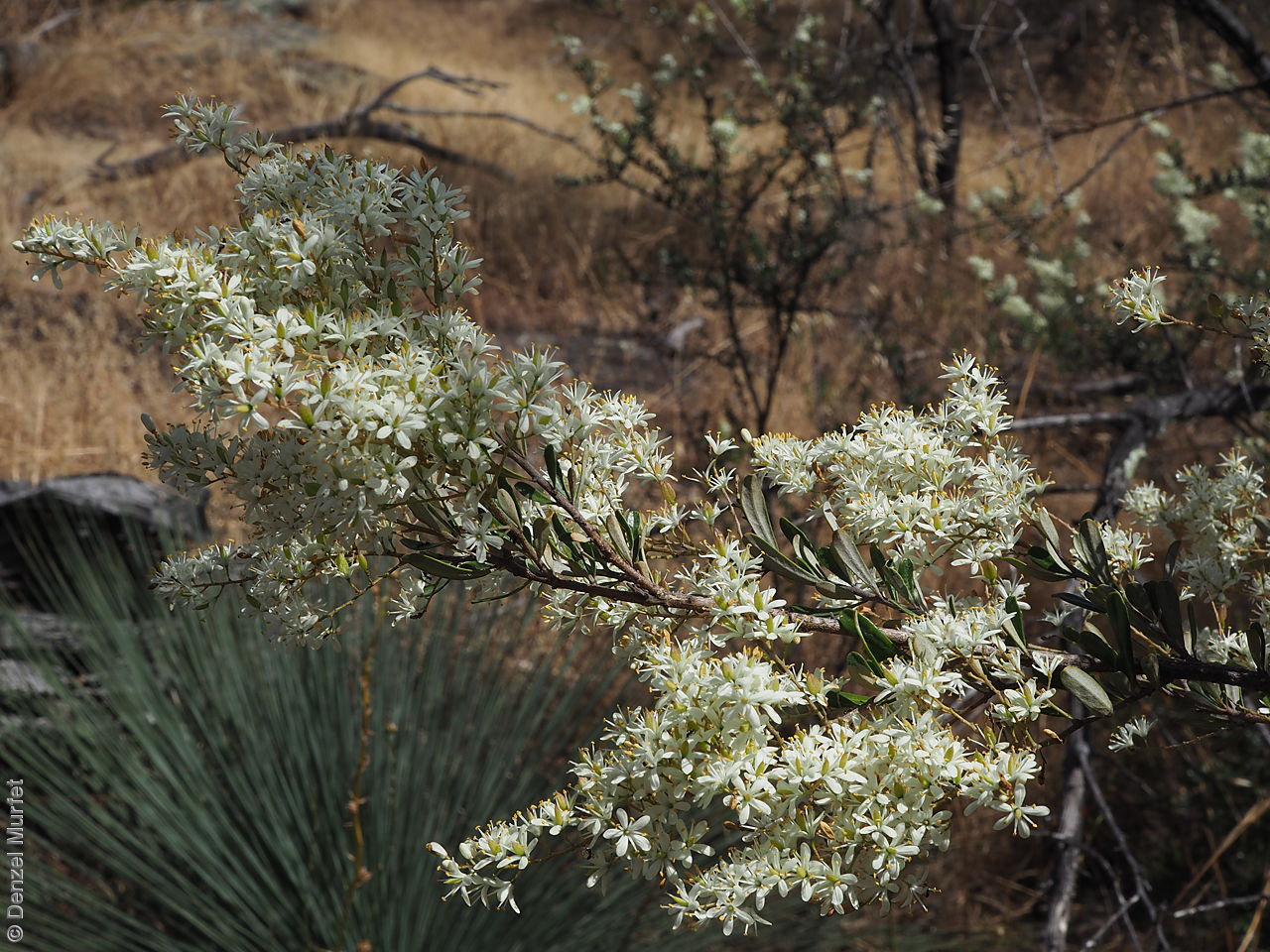
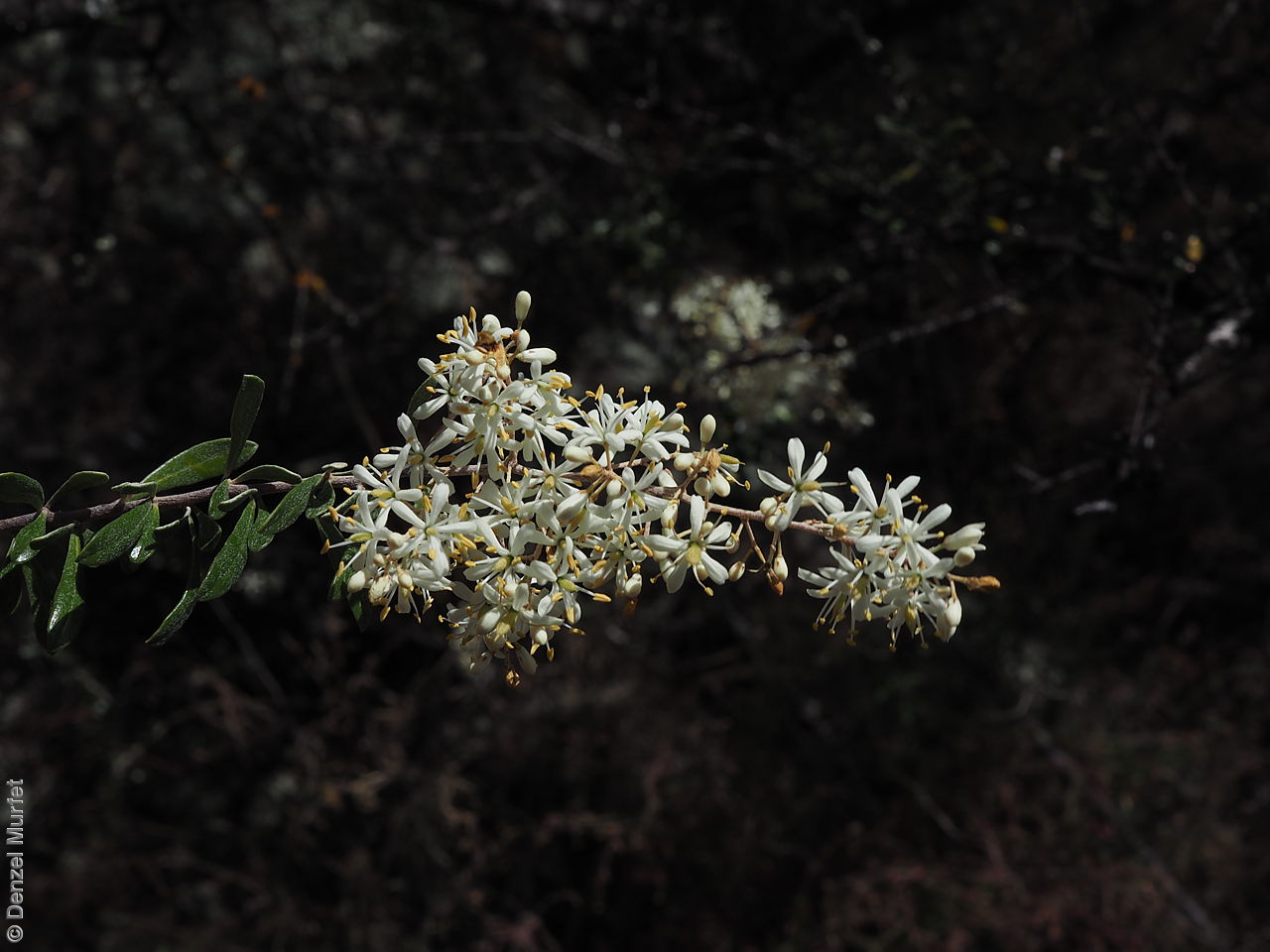
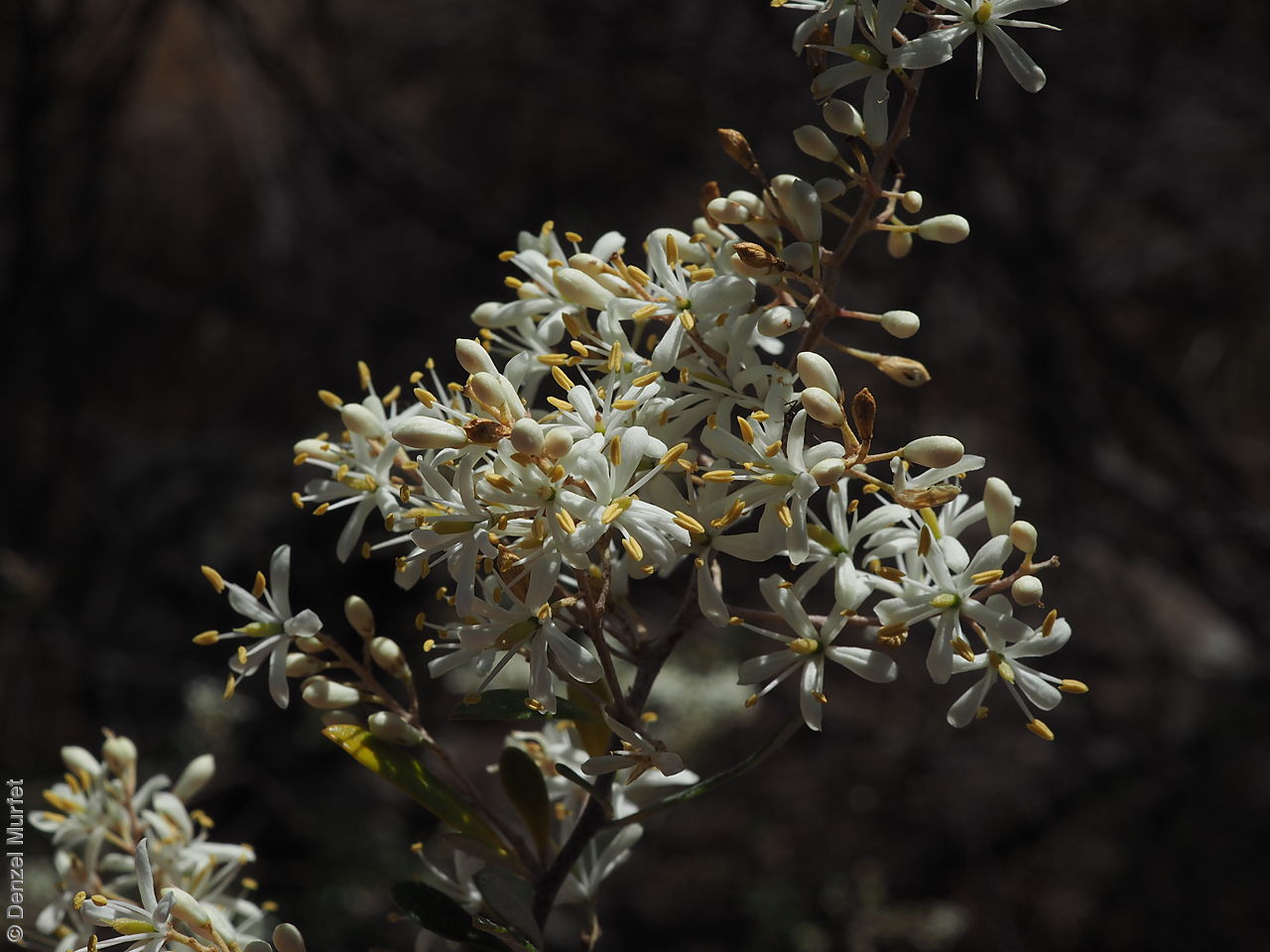
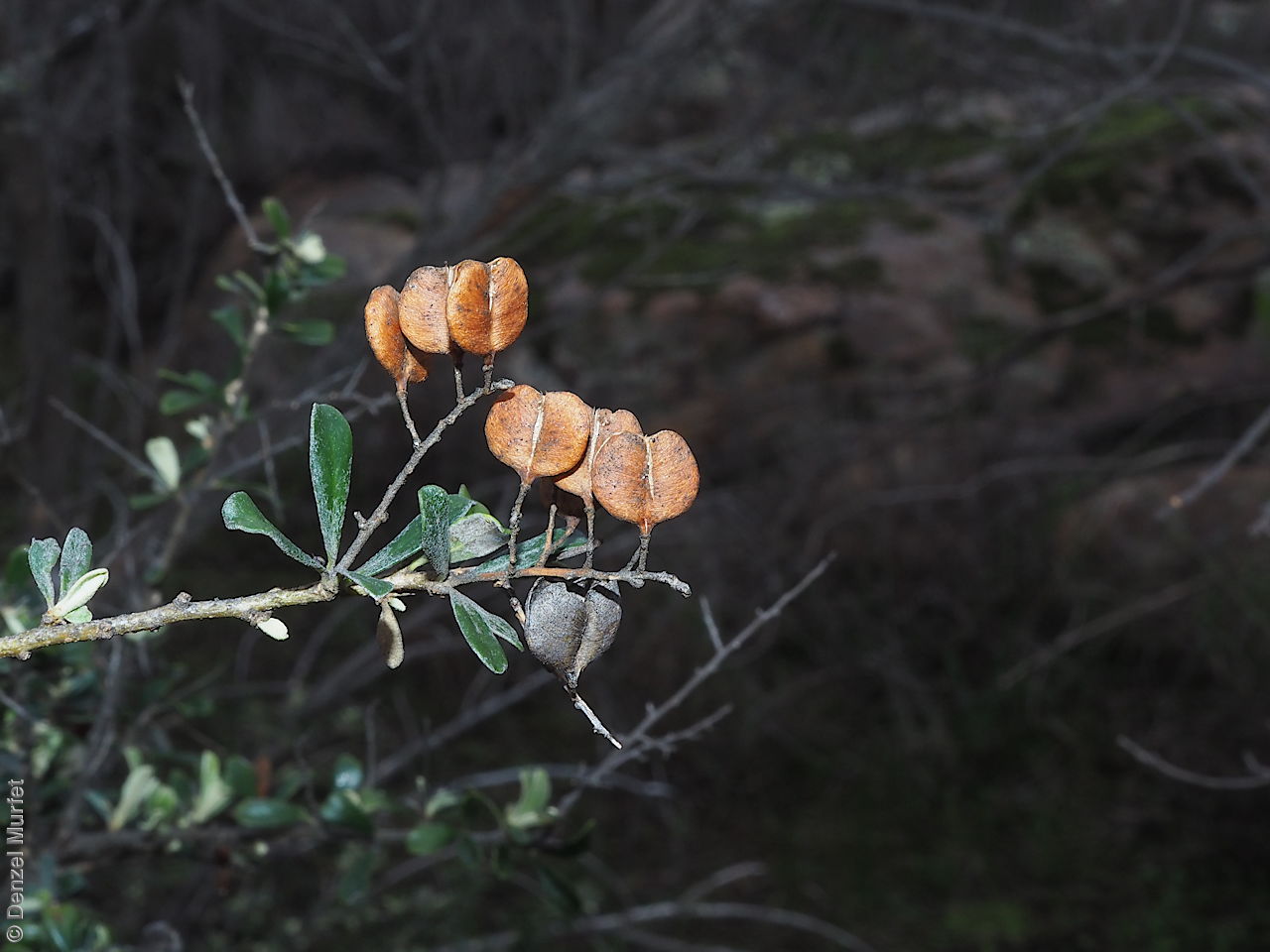

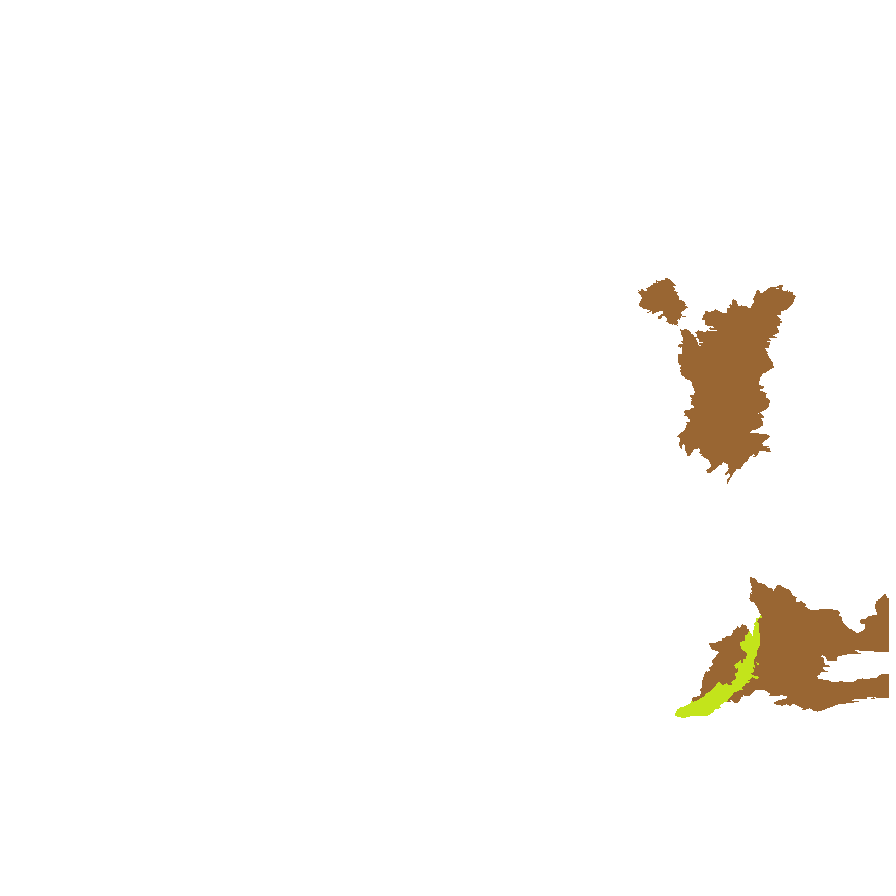
Botanical art
Prior names
Bursaria lasiophylla var. albicoma
Common names
Hairy Christmas Bush
Downy Bursaria
Hoary Native Box
Etymology
Bursaria from the Latin 'bursa' meaning a purse or pouch, referring to the shape of the fruit. Spinosa from the Latin 'spinosus' meaning thorny, referring to the spines that were present on the type specimen for Bursaria spinosa. Lasiophylla from the Greek 'lasios' meaning hairy or shaggy and and 'phylla' meaning a leaf, referring to the dense white or greyish hairs on the underside of the leaves.
Distribution and status
Found in the northern Flinders Ranges and Murrayland in South Australia, growing on heavier soils than the other subspecies. Also found in New South Wales and Victoria. Native. Rare in South Australia. Common in the others states.
Herbarium regions: Flinders Ranges, Murray, Southern Lofty
AVH map: SA distribution map (external link)
Plant description
Tall shrub to 3 m high with hoary branches when young and occasional spines. Leaves alternate or clustered around spines, narrowly to broadly obovate, to 30 mm long and 10 mm wide, glabrous or glabrescent on upper surface, densely white, grey or yellowish beneath. Inflorescence a slender spike with white or cream flowers. Flowering between November and February. This subspecies differs from the other subspecies Bursaria spinosa ssp. spinosa which have glabrous leaves on the underside. Fruits are flattened ovoid capsules to 7 mm long and 8 mm wide, brown when mature and containing two seeds. Seed embryo type is linear fully developed.
Seed collection and propagation
Collect seeds between January and April. Collect maturing capsules individually or break off whole stems. The capsules should be drying off and turning brown with orange seeds inside. Do not collect capsules that have split open as the seed has already been released. Place the capsules in a tray, cover with paper and leave to dry for 1 to 2 weeks or until the capsules split. Then place the capsules in a bucket with a lid if possible and shake gently to dislodge the seeds. Use a sieve to separate the unwanted material. Store the seeds with a desiccant such as dried silica beads or dry rice, in an air tight container in a cool and dry place. Seed viability is usually high. Viable should germinate readily when sown in winter.
| Location | No. of seeds (weight grams) | Number of plants | Date collected | Collection number Collection location | Date stored | % Viability | Storage temperature |
|---|---|---|---|---|---|---|---|
| BGA | 720 (1.4 g) | 12 | 1-Mar-2010 | Frances Pro South Eastern | 1-Jun-2010 | 100% | -18°C |
Number of plants: This is the number of plants from which the seeds were collected.
Collection location: The Herbarium of South Australia's region name.
% Viability: Percentage of filled healthy seeds determined by a cut test or x-ray.